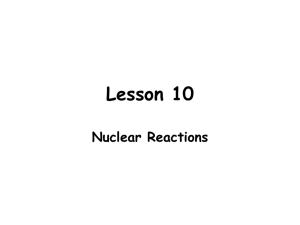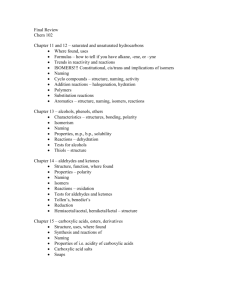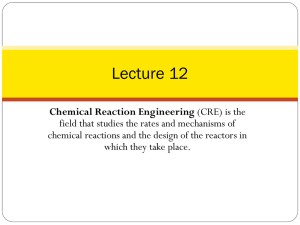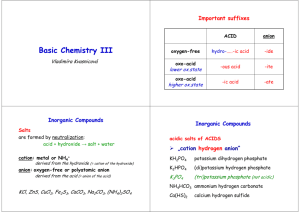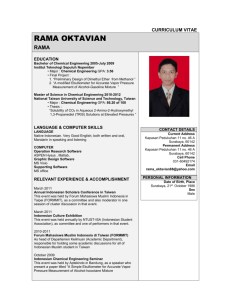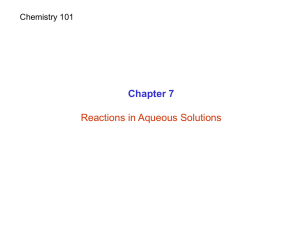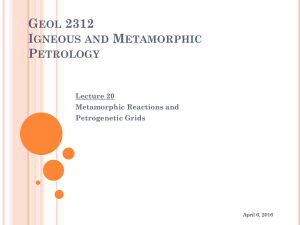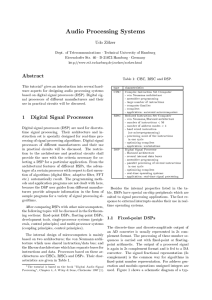Digital Signal Processing - The Circuits and Biology Lab at UMN
advertisement
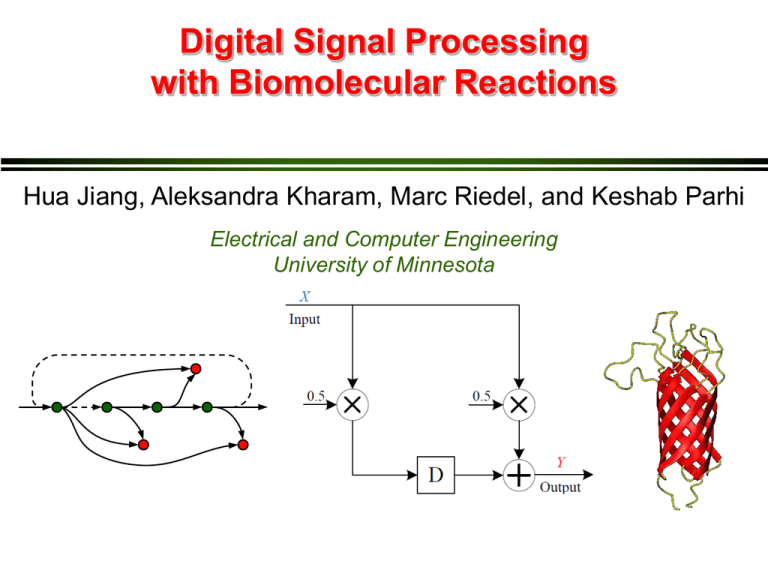
Digital Signal Processing with Biomolecular Reactions Hua Jiang, Aleksandra Kharam, Marc Riedel, and Keshab Parhi Electrical and Computer Engineering University of Minnesota Overview • Signal processing with chemical reactions: exact and rate-independent designs. • Technology-independent designs: abstract chemical reactions. • Technology-mapping: DNA strand displacement reactions. • Examples: FIR moving average and IIR biquad filters. • General synthesis methdology. Digital Signal Processing A digital signal is a sequence of numbers. A digital signal processing (DSP) system takes an input sequence and produces an output sequence. 1010 1100 0010 input 10, 2, 12, 8, 4, 8, 10, 2, … 5, 6, 7, 10, 6, 6, 9, 6, … 0101 0111 0110 Chemical Electronics DSP Reactions output Electronically, Chemically, molecular numbers are quantities, orby represented concentrations, binary strings represent (zeros andthe ones digital are signal. voltages). Playing by The Rules Biochemical Reactions: rules specifying how types of molecules combine. k a + + b c Modeled by ordinary differential equations (ODEs) DSP with Reactions Input Output 10, 2, 12, 8, 4, 8, 10, 2, … … Time-varying changes in concentrations of an input molecular type. 5, 6, 7, 10, 6, 6, 9, 6, … Reactions … Time-varying changes in concentrations of output molecular type. Moving Average Filter: Chemical Chemical Reactions time time But how do we achieve the synchronization? DSP Building Blocks Most DSP systems can be specified in terms of 4 major components: constant multipliers, fanouts, adders and delay elements. Constant Multiplier Adder Fanout Delay Element Computational Modules Constant Multiplier X Y Computational Modules Adder Computational Modules X Fanout A B Delay Element Molecular quantities are preserved over “computational cycles.” Contents of different delay elements are transferred synchronously. 3-Phase Scheme We use a three compartment configuration for delay elements: we categorize the types into three groups: red, green and blue. Every delay element Di is assigned Ri, Gi, and Bi Absence Indicators But how do we know that a group of molecules is absent? R r Moving Average Filter absence indicators Moving Average Filter Signal transfer Computation Absence indicator Simulation Results: Moving Average Output obtained by ODE simulations of the chemical kinetics. General DSP System Biquad Filter Biquad Filter Absence indicator Signal transfer Computation Discussion Computational Chemical Design vis-a-vis Technology-Independent Logic Synthesis • Synthesize a design for a precise, robust, programmable computation – with abstract types and reactions. Experimental Design vis-a-vis Technology Mapping in Circuit Design • Implement design by selecting specific types and reactions – say from “toolkit”. Technology Mapping: DNA Strand Displacement X1 X2 + X3 D. Soloveichik et al: “DNA as a Universal Substrate for Chemical Kinetics.” PNAS, Mar 2010 Technology Mapping: DNA Strand Displacement X1 + X2 X3 D. Soloveichik et al: “DNA as a Universal Substrate for Chemical Kinetics.” PNAS, Mar 2010 Simulation Results: Biquad Filter Output obtained by ODE simulations of chemical kinetics at the DNA level. Conclusions • Functionality: – Basic digital signal are implemented with chemical reactions. • Robustness: – Computation is rate independent. Implementation requires only coarse rate levels. • An automatic compiler is available at http://cctbio.ece.umn.edu/biocompiler Future Work Experimental Implementation and Optimization • Translate into DNA strand displacement reactions. • Optimization reactions at the DNA level. System performance analysis • Dynamic range • Precision • Representation of negative signals Applications • Drug delivery. • Biochemical sensing. Questions? Thanks to NSF and BICB NSF CAREER Award #0845650 NSF EAGER Grant #0946601 Biomedical Informatics & Computational Biology UMN / Mayo Clinic / IBM
